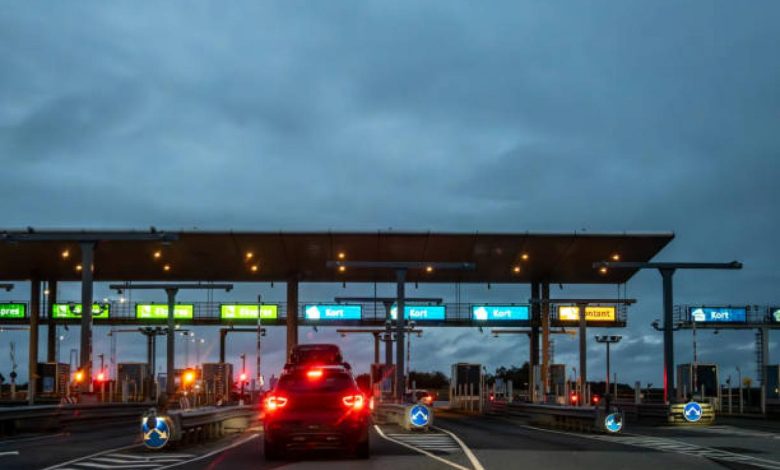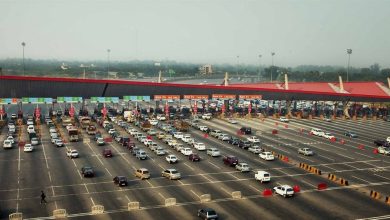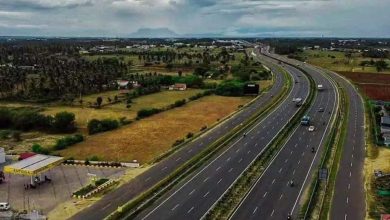New Satellite-Based Toll System on Highways to Be Rolled Out Soon: Nitin Gadkari

India is on the cusp of a transformative change in its highway infrastructure. The introduction of a satellite-based toll system promises to revolutionize the way tolls are collected across the nation’s highways. Union Minister Nitin Gadkari recently announced the impending rollout of this cutting-edge technology, aimed at improving traffic flow and reducing congestion. But what exactly does this mean for the everyday traveler? Let’s dive into the details.
What is the Satellite-Based Toll System?
The satellite-based toll system, powered by the Global Navigation Satellite System (GNSS), is a significant upgrade from the existing FASTag system. Unlike traditional toll collection methods, which rely on physical toll booths and electronic tags, GNSS uses satellite technology to automatically calculate the distance a vehicle travels on a highway and deducts the appropriate toll fee.
How Does It Work?
The system works by using satellites to track the movement of vehicles. As a vehicle enters a highway, the GNSS system begins to monitor its journey. The toll is calculated based on the distance traveled, ensuring that motorists only pay for the actual distance they cover. This system eliminates the need for multiple toll booths and long queues, making the entire process more efficient.
Why the Change?
Addressing Congestion Issues
One of the primary reasons for this shift is to tackle the ever-growing problem of traffic congestion on Indian highways. Traditional toll booths often result in long queues, especially during peak hours. By eliminating these booths, the satellite-based toll system is expected to significantly reduce travel time and ease traffic flow.
Fair Toll Collection
Another key advantage of the GNSS system is its ability to ensure fair toll collection. In the current system, motorists often end up paying higher fees due to multiple toll booths situated over short distances. The new system calculates tolls based on the actual distance traveled, leading to potential savings for drivers.
Current Testing and Implementation
Pilot Projects Underway
The satellite-based toll system is currently being tested on two major highways: the Bengaluru-Mysuru National Highway (NH-275) in Karnataka and the Panipat-Hisar National Highway (NH-709) in Haryana. These pilot projects are crucial for assessing the system’s performance and addressing any potential challenges before a nationwide rollout.
Phased Rollout
Once the testing phase is complete and the system receives the necessary approvals, the GNSS toll collection system will be rolled out in phases. Initially, it will cover major highways that connect key cities. The phased approach ensures a smooth transition from the existing system to the new one.
Impact on Motorists
Cost Savings
For motorists, the new system could translate into significant cost savings. By paying only for the distance traveled, drivers can avoid the extra charges often associated with multiple toll booths. This change is particularly beneficial for those who frequently travel short distances on highways.
Reduced Travel Time
With the elimination of toll booths, the new system promises to reduce travel time by cutting down on the time spent waiting in queues. This is especially advantageous for long-distance travelers who often face delays at multiple toll points.
Enhanced Transparency
The satellite-based toll system also enhances transparency in toll collection. Since the toll is automatically calculated based on the distance traveled, there is less room for errors or discrepancies. This ensures that motorists are charged accurately and fairly.
Environmental Benefits
Lower Carbon Emissions
By reducing the time vehicles spend idling at toll booths, the new system contributes to lower carbon emissions. This is a small but significant step towards making Indian highways more environmentally friendly.
Efficient Use of Resources
The GNSS system’s efficiency also extends to the use of resources. With fewer toll booths needed, the infrastructure required to support the highway system is reduced, leading to cost savings and less environmental impact.
Challenges and Considerations
Technology Adoption
One of the challenges associated with the new system is the adoption of the required technology. Motorists will need to ensure their vehicles are equipped with the necessary GNSS-enabled devices. Additionally, there may be initial resistance to change from those accustomed to the traditional toll collection methods.
Privacy Concerns
As with any system that tracks vehicle movement, there may be concerns about privacy. It is essential for the government to address these concerns and ensure that the data collected is used solely for toll collection purposes and is adequately protected.
Infrastructure Upgrades
The successful implementation of the GNSS system will also require significant upgrades to the existing highway infrastructure. This includes installing the necessary satellite tracking systems and ensuring seamless integration with the existing road networks.
The Future of Toll Collection in India
The introduction of the satellite-based toll system marks a significant step forward in India’s efforts to modernize its highway infrastructure. As the system is rolled out across the country, it has the potential to set new standards for toll collection worldwide.
Global Implications
India’s adoption of GNSS technology for toll collection could serve as a model for other countries facing similar challenges with traffic congestion and toll collection inefficiencies. By leading the way in this area, India could establish itself as a pioneer in highway infrastructure innovation.
Long-Term Benefits
In the long term, the satellite-based toll system is expected to bring about numerous benefits, including reduced travel times, cost savings for motorists, and a more efficient and transparent toll collection process. As the system evolves, it may also open up new opportunities for further innovations in highway management and traffic control.
The rollout of the satellite-based toll system on Indian highways represents a major leap forward in the country’s transportation infrastructure. By leveraging advanced GNSS technology, this system promises to enhance the driving experience, reduce congestion, and ensure fair toll collection for all motorists. As the phased implementation begins, the future of toll collection in India looks promising, with the potential to set a global benchmark for other nations to follow.
1. What is the main advantage of the satellite-based toll system?
The primary advantage is the elimination of traditional toll booths, leading to reduced travel time and more accurate toll charges based on the distance traveled.
2. How does the GNSS technology work in this toll system?
GNSS uses satellites to track a vehicle’s journey on the highway and calculates the toll based on the distance covered, automatically deducting the fee.
3. Where is the satellite-based toll system currently being tested?
The system is being tested on the Bengaluru-Mysuru National Highway in Karnataka and the Panipat-Hisar National Highway in Haryana.
4. Will the new toll system be rolled out nationwide?
Yes, the GNSS toll collection system will be rolled out in phases across major highways connecting key cities after successful testing and approval.
5. Are there any potential challenges with the new toll system?
Challenges include technology adoption by motorists, privacy concerns, and the need for infrastructure upgrades to support the system.









